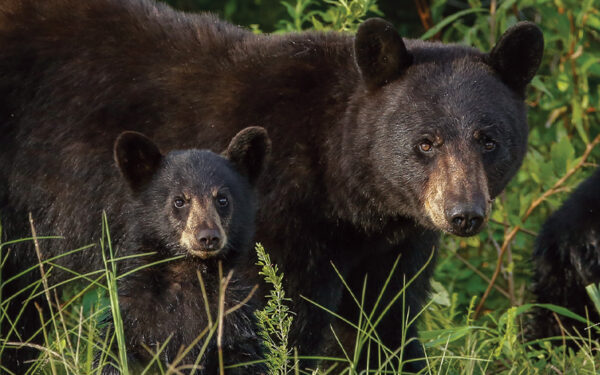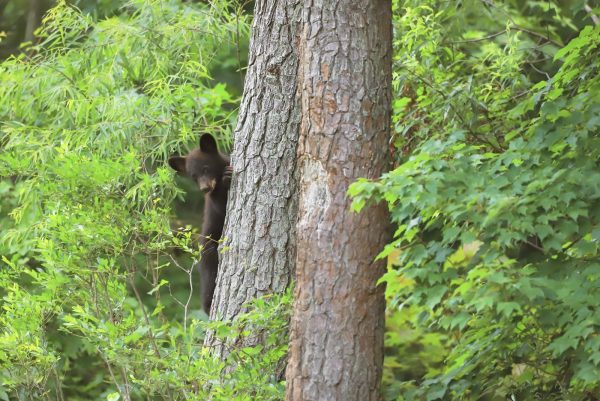
Bear cub and mother
Until April/May, sows with cubs are typically in dens. Most small bears people see in early spring are not actual “baby bears” but yearlings (>12 months old). They do not need their mothers to survive.
If a small yearling is on your property, the worst thing you can do is feed the bear. Yearlings need to learn how to find natural foods and not become food conditioned or habituated to humans.

Bear cub in tree Photo by Aleshia Matthews
Once females leave their dens with 4 to 5 month-old cubs, they will typically travel in close groups unless something makes the female nervous. If you see a very small cub, do not try to remove it from the area or “save it.” When sensing danger, a female bear will typically send her cub(s) up a tree and leave the area. In such cases, the female will almost always return to gather up the cub(s) when no people or pets are around, usually after dark.
Preventing problems with bears is a shared responsibility between the citizens of Virginia and the Virginia Department of Wildlife Resources. Always remember that a bear is a wild animal, and that it is detrimental to the bear, as well as illegal in Virginia, to feed a bear under any circumstances. Even allowing a bear to feed on trash or birdseed is illegal. You can help manage the Commonwealth’s black bear population and Keep Bears Wild.
If you experience a bear problem after taking appropriate steps of prevention, please call the Wildlife Conflict Helpline at (855) 571-9003.
To keep bears wild, what YOU do really matters. Learn more on how to become Bear Aware »


